Regional Adaptation Strategy
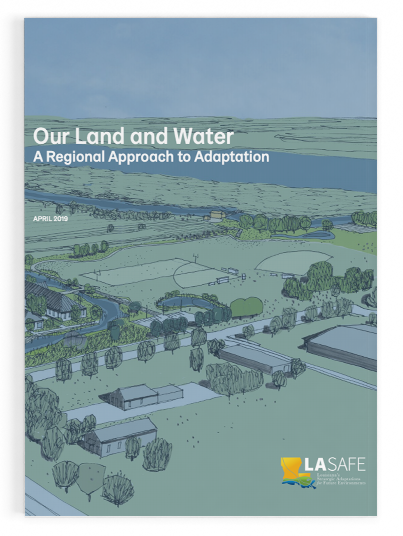
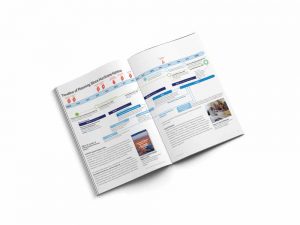 LA SAFE addresses community resilience holistically – integrating risk planning with planning for stormwater management, housing, transportation, economic development, education, recreation, and culture. The Regional Adaptation Strategy summarizes goals and action items developed through LA SAFE’s planning effort for implementation across a larger geography over a 50-year time frame.
LA SAFE addresses community resilience holistically – integrating risk planning with planning for stormwater management, housing, transportation, economic development, education, recreation, and culture. The Regional Adaptation Strategy summarizes goals and action items developed through LA SAFE’s planning effort for implementation across a larger geography over a 50-year time frame.
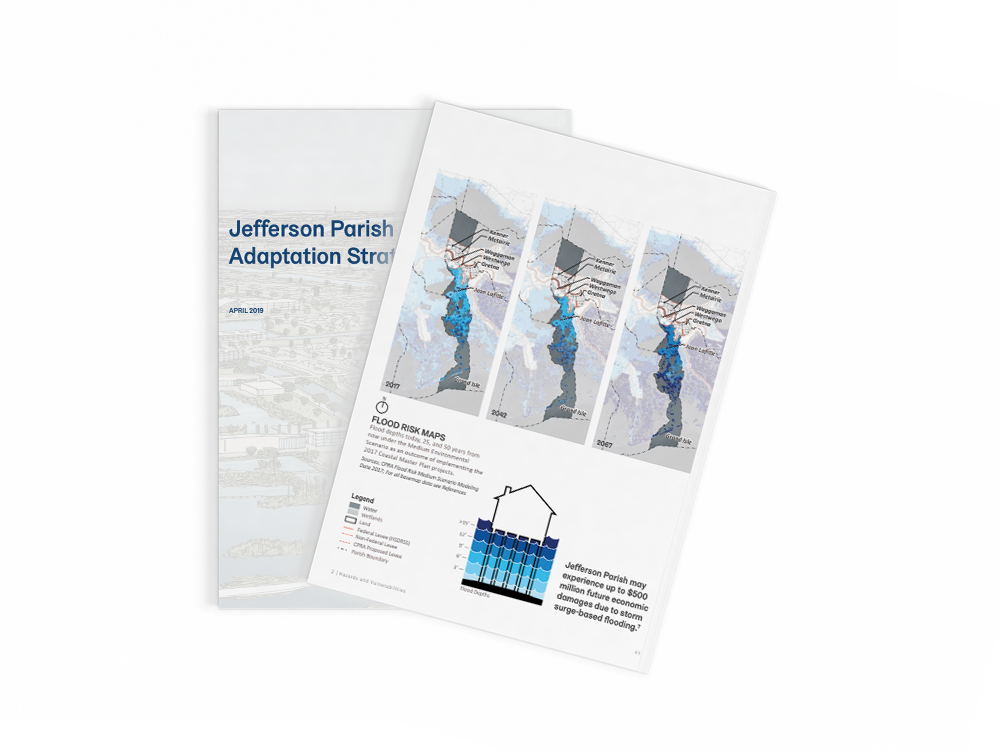
Jefferson Parish Adaptation Strategy
"Due to its geographic location, Jefferson Parish is susceptible to the impacts of tropical storms and relative sea level rise. Effects of these two significant hazards include storm surge, heavy precipitation, land loss, sea level rise, and subsidence—all of which are connected and have a collective impact that increases flood risk and coastal erosion in Jefferson Parish." - Page 38
Lafourche Parish Adaptation Strategy
"Lafourche Parish’s landmass was built over thousands of years by sediment from the Mississippi River and connecting distributaries. Annual flooding brought sediment that was then deposited throughout the area as waterways overflowed their banks and discharged into marshes and estuaries. This sediment input countered the effects of coastal erosion. However, when levees were constructed along the lower Mississippi River Basin to mitigate flooding, they choked off the sediment supply to the parish and stopped the natural land-building process." - Page 40
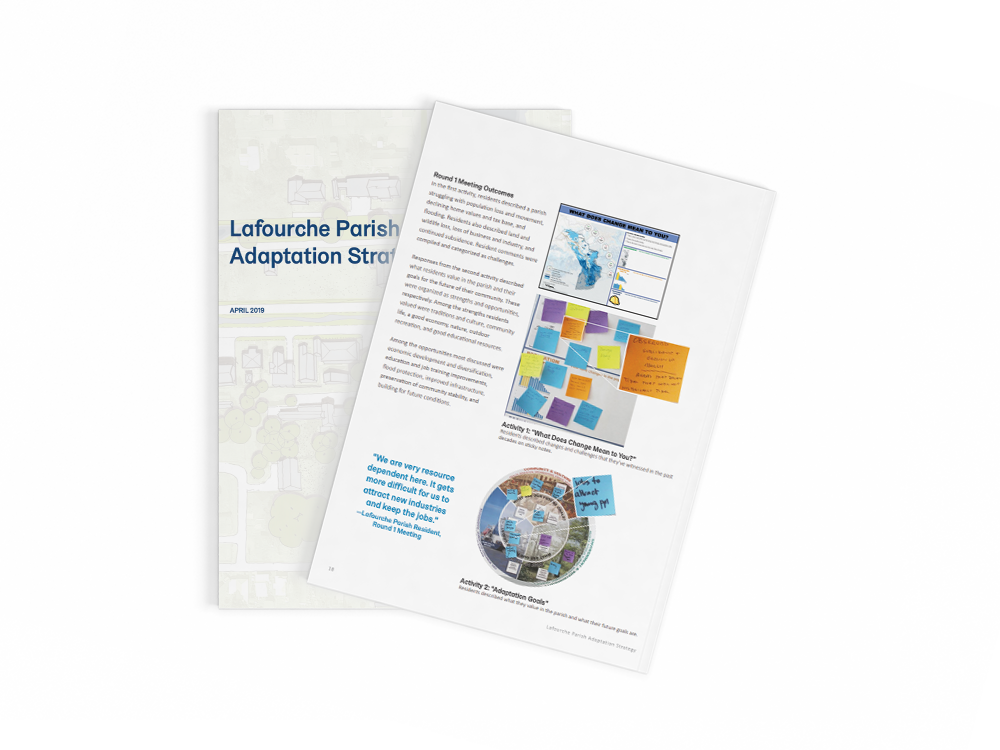
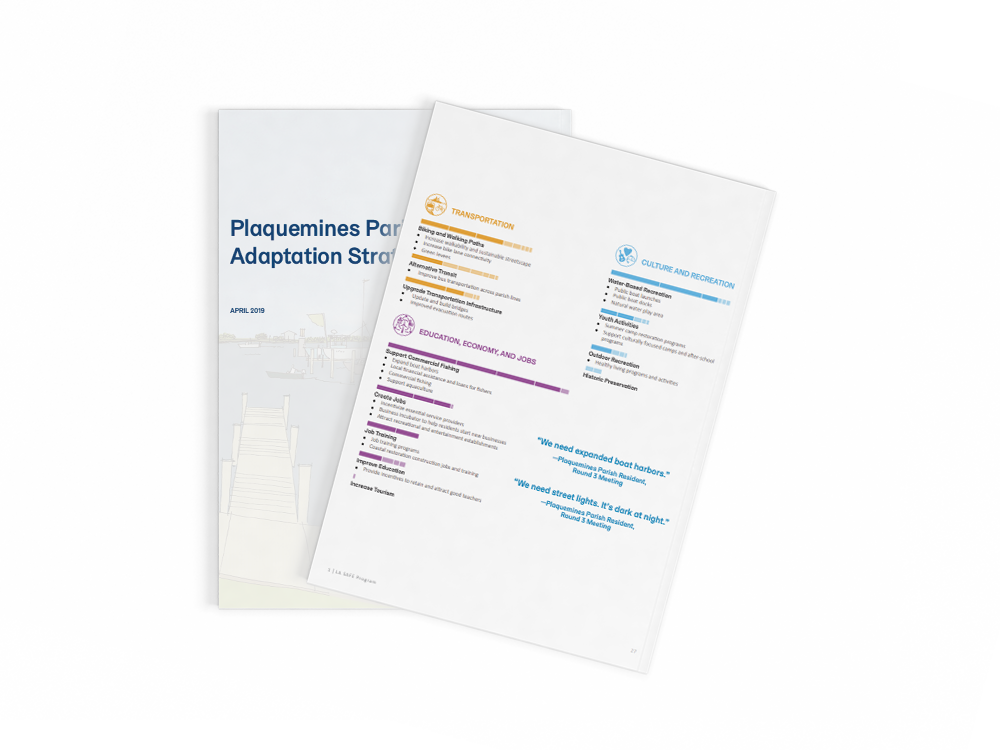
Plaquemines Parish Adaptation Strategy
"In Plaquemines Parish, like other parishes and communities across the state and nation, stormwater management best practices need to complement and support resilient development and redevelopment. Many green infrastructure site-design practices can reduce the cost of infrastructure while maintaining or even increasing the value of the property." - Page 104
St. John the Baptist Parish Adaptation Strategy
"Strategic transportation projects can address mobility challenges by overcoming the divide created by the Mississippi River and providing more transportation options for seniors and households without cars. Transportation infrastructure investments can also support economic development goals, establish more walkable development patterns, and use rights-of-way as environmental corridors to support better stormwater management and improved drainage." - Page 140
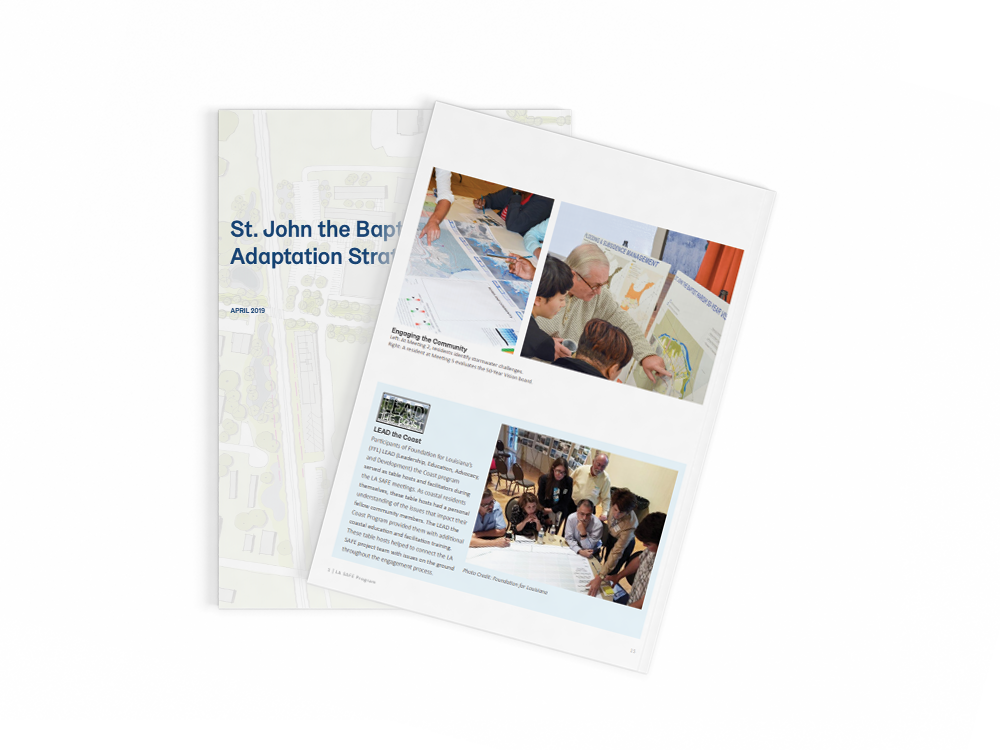
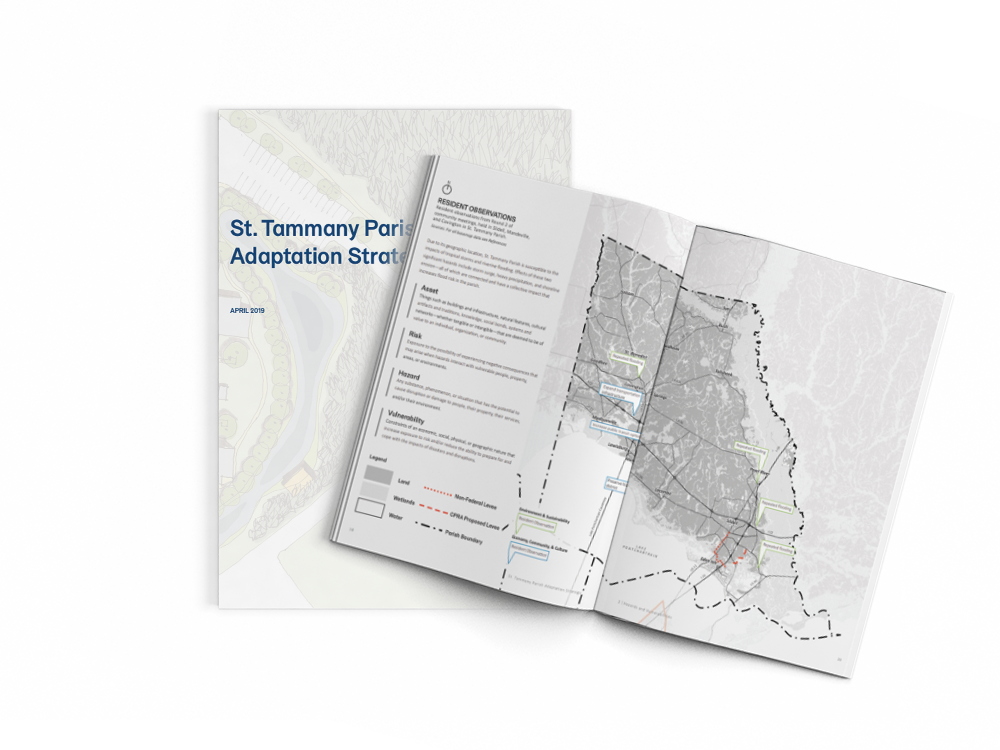
St. Tammany Parish Adaptation Strategy
"When polled at Meeting 3 about the types of job opportunities they would like to see expanded in the parish, participants recognized that St. Tammany Parish must continue to diversify its economy to retain its workforce and reduce commuters. In addition to building on existing industries—tourism, healthcare, and retail—there are three emerging industries that show promise for gaining a stronghold: alternative energy, ecotourism, and technology." - Page 75
Terrebonne Parish Adaptation Strategy
"To date, Terrebonne Parish has planned and implemented numerous flood protection and wetland restoration projects. However, as flood risk continues to increase locally and globally, different strategies are needed to ensure Terrebonne Parish will adapt to an ever changing environment." - Page 199

FINAL PARISH - COMMUNITY RATING SYSTEM ASSESSMENTS (CRS)
By participating in the CRS, communities can earn a discount on flood insurance premiums for local policyholders. A community earns points for each CRS activity completed; the number of points determines the amount of the flood insurance premium discount.
LA SAFE Evaluations
 UNO - CHART
UNO - CHART
The Collective Search for Common Ground An Evaluation
"In coastal Louisiana, subsidence and sea level rise, plus the threat of hurricanes and flooding, combine to create one of the highest rates of relative sea level rise in the world (Penland & Ramsey, 1990). To help address these issues, the National Disaster Resilience Competition (NDRC), sponsored by the U.S. Department of Housing and Urban Development (HUD) and the Rockefeller Foundation, awarded funding for LA SAFE – Louisiana’s Strategic Adaptations for Future Environments. The LA SAFE program, a partnership between the Office of Community Development (OCD) and the Foundation for Louisiana (FFL), supported an inclusive public process to identify adaptation strategies to enhance the resilience of coastal Louisiana. This public process involved the six parishes most impacted by Hurricane Isaac in 2012: Jefferson, Lafourche, Plaquemines, St. John the Baptist, St. Tammany, and Terrebonne.
Throughout the planning and implementation process, UNO-CHART conducted an evaluation in an iterative manner that allowed for continual feedback. The evaluation was a mixed methods process that included both qualitative and quantitative measures, involving both process and outcome measures."
 Nonprofit Knowledge Works - Official Home of the Data Center
Nonprofit Knowledge Works - Official Home of the Data Center
LASAFE Final Report Conclusions and Recommendations
"The LA SAFE project was a ground-breaking effort to execute extensive community engagement activities to co-design resilience projects for six parishes in Southeast Louisiana. Data was essential to these conversations because it allowed residents to shift away from substantiating problems through anecdote to refocusing on solutions. As Foundation for Louisiana considers expanding resilience planning efforts to the rest of South Louisiana, The Data Center recommends compiling and displaying sub-parish population and jobs data in much the same way that was done for the six LA SAFE parishes. The Data Center attended many of the meetings where this data was presented and interviewed LA SAFE partners after the meetings to assess their effectiveness. The Page 3 of 3 maps developed by LA SAFE partners were found to be compelling and effective and should be used as a template for future such engagements."

